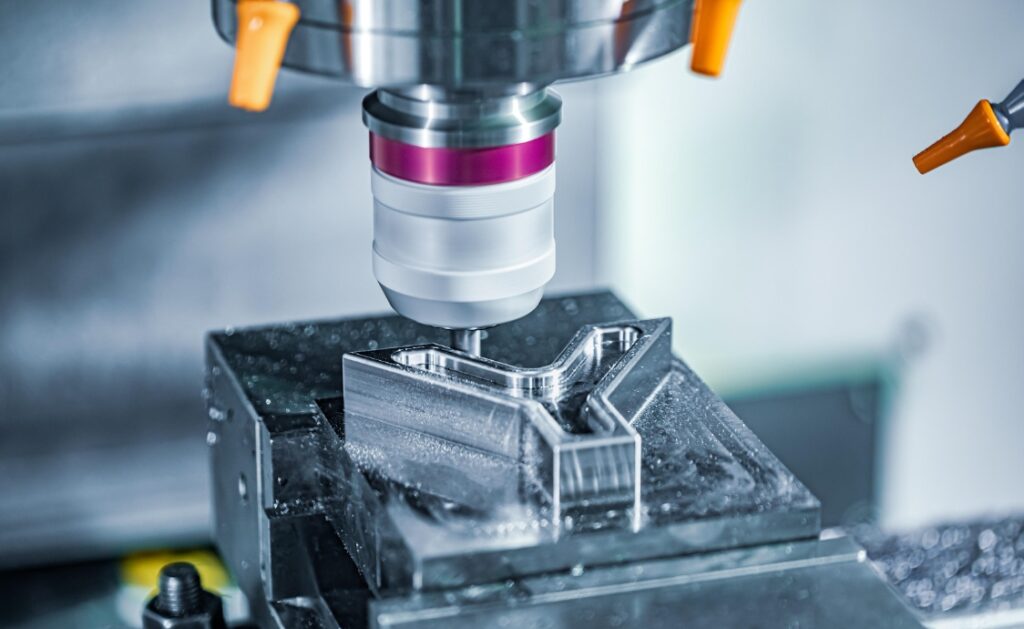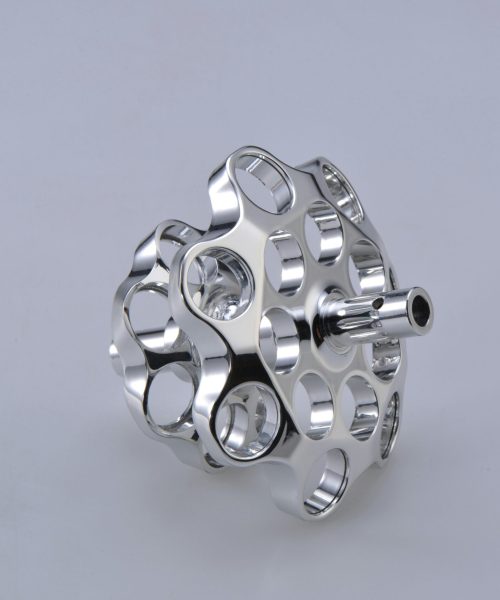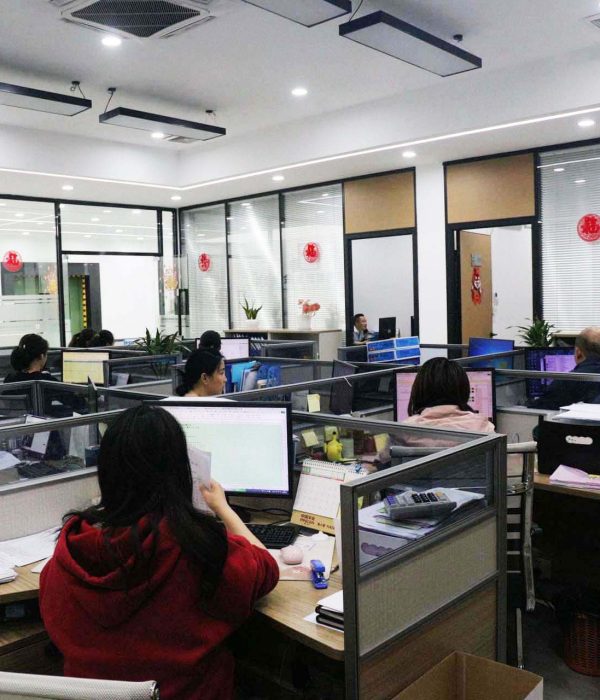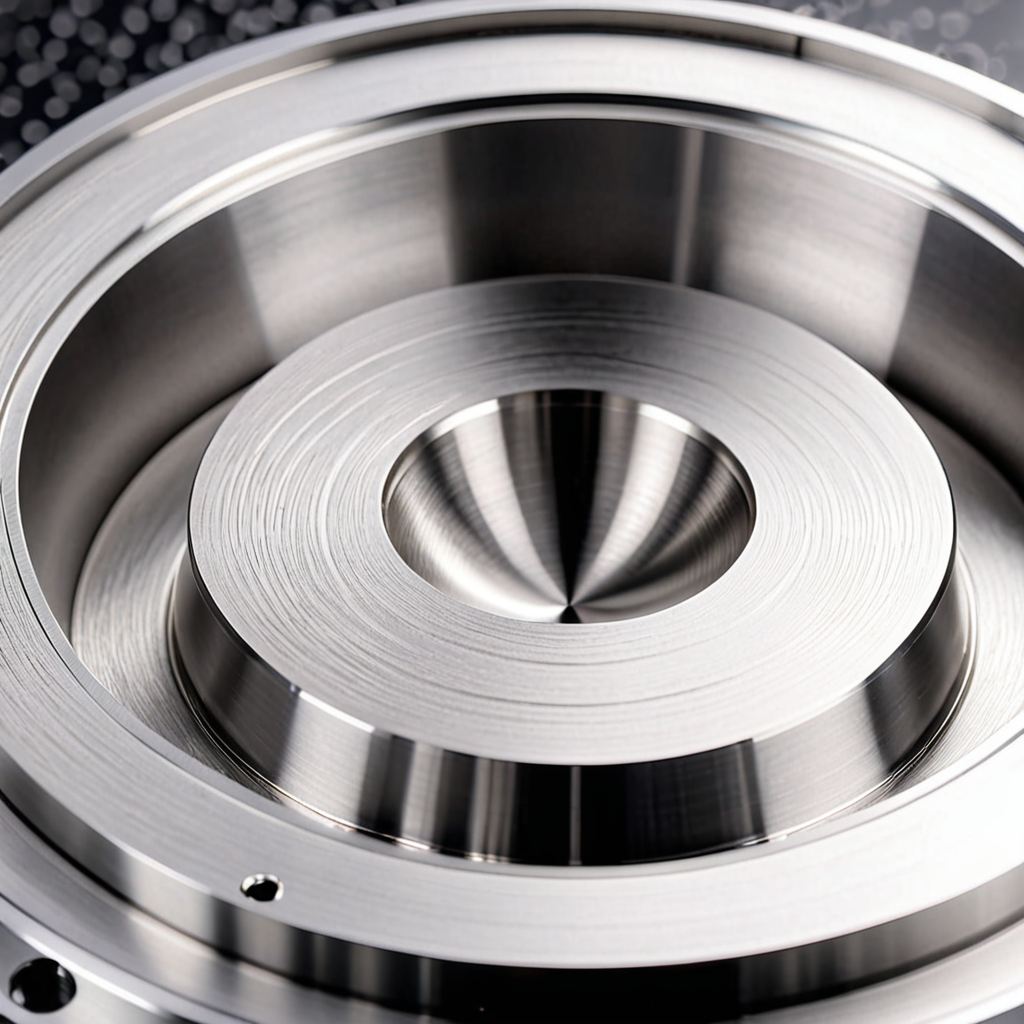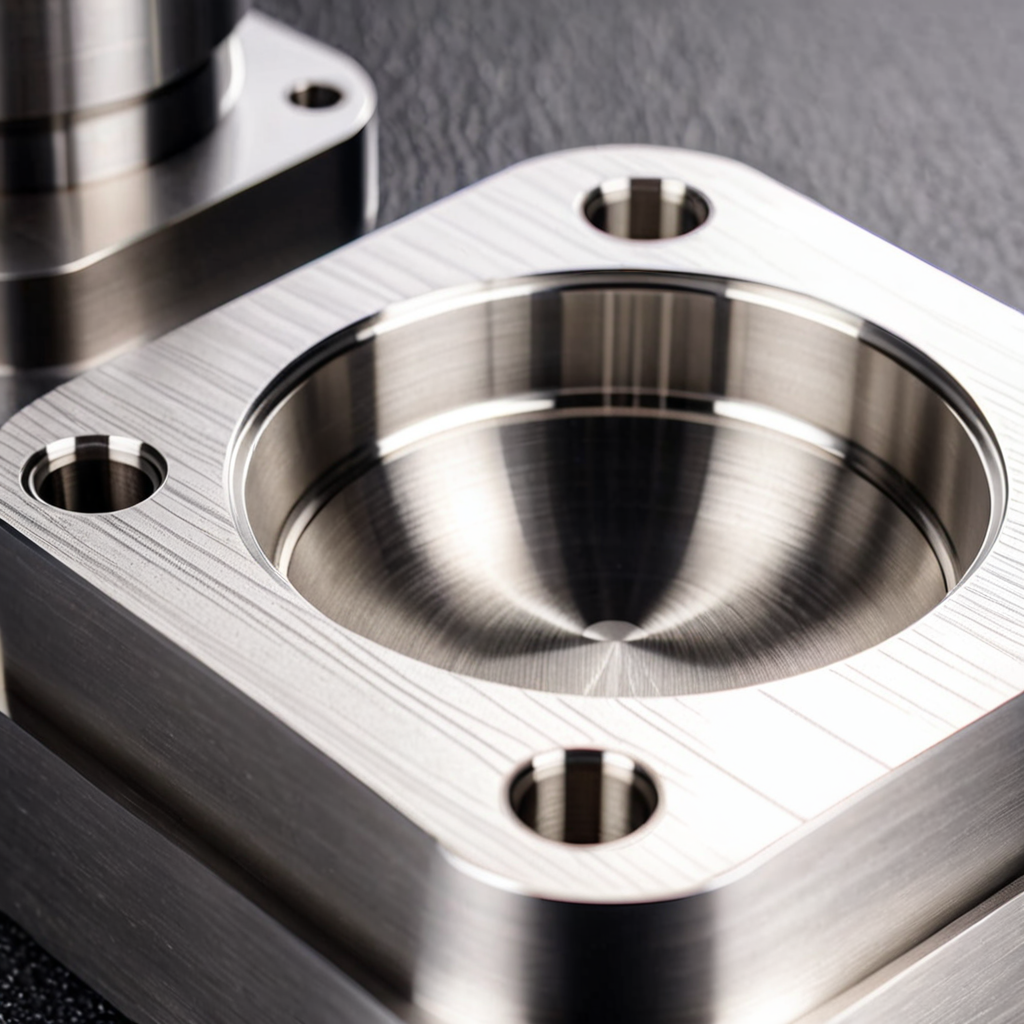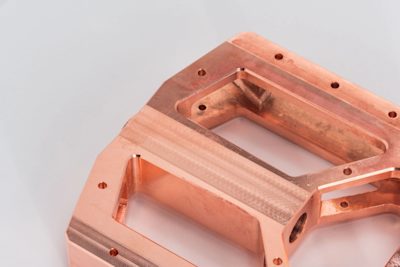The manufacturing industry has evolved tremendously over the years, and one of the key technologies driving this progress is CNC (Computer Numerical Control) milling. CNC milling plays a crucial role in creating precise and intricate components for various industries. This article will explore the fundamental aspects of CNC milling, its processes, and the benefits it brings to modern manufacturing.
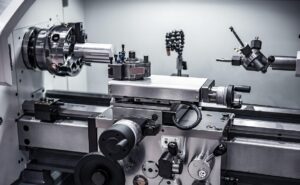

What is CNC Milling?
CNC milling is a subtractive manufacturing process that involves removing material from a workpiece using a rotating cutting tool. The workpiece is securely mounted on a table, which moves or rotates in different planes to allow the tool to work at various angles. Advanced CNC milling machines can have five or more axes of independent motion, enabling the creation of complex shapes without needing to transfer the workpiece to another machine.
Axes of Motion in CNC Milling Machines
The movements of a CNC milling machine are based on an X-Y-Z coordinate system, which machinists use to describe the machine’s basic movements relative to the operator’s perspective. A standard CNC mill typically has three axes:
- Z-Axis: The milling spindle, which moves up and down.
- X-Axis: The left-to-right movement.
- Y-Axis: The front-to-back movement.
Additional rotary tables can be added to provide more movements, while five-axis machines have built-in rotating work tables for added flexibility.
Advantages of Computer Numeric Control in CNC Milling
CNC milling relies heavily on Computer Numeric Control (CNC), which uses computer programs derived from 3D digital files of the desired finished part. Early automated machine tools used punch cards to control their movements, but this technology was slow and cumbersome. Modern CNC machines use fully digital instructions in G-Code, which can be easily modified in real-time to fine-tune the machining program for optimal results.
Benefits of Automatic Tool Changers
Creating a finished part from a block of material requires various tools, each performing specific functions. Changing these tools manually would be inefficient and time-consuming. CNC milling machines solve this problem with rotating carousels that pre-load all the needed tools. These tools can be automatically exchanged on the spindle within seconds, significantly improving efficiency.
For instance, the carousel on the Haas VF-2SS mill can hold up to 30 tools plus one on the spindle, ensuring all conventional CNC milling operations can be performed in one setup. Using an automated tool dispensing system further enhances this efficiency by ensuring the right tool is always available for every job.
The Importance of Workpiece Holding
In CNC milling, the workpiece is fixed in position on a work table while the tool moves around it. This is different from CNC turning, where the workpiece spins while the tool remains stationary. Because of this difference, holding strategies vary. Simple rectangular shapes can be clamped directly to the table’s surface, while unusual shapes may require custom holding fixtures, adding complexity and time to the project.
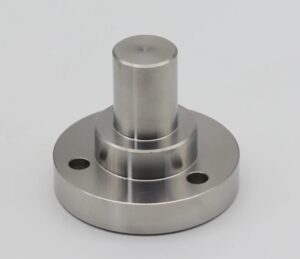

Achieving Great Parts with CNC Milling
Symmetrical parts that are essentially round are best machined on a CNC turning center for maximum efficiency. However, most parts are not round and must be milled. Multi-axis mills excel in creating square shapes, bevels, angles, slots, and complex curves. They can handle any subtractive machining process, including making round shapes, and are highly accurate, routinely holding tolerances of 0.01mm or 10 microns.
When you upload your CAD files to GCH Process for a quotation, you receive high-quality parts and prototypes quickly, backed by comprehensive material inspection and testing services.
Detailed Analysis of CNC Milling Processes and Tools
Types of CNC Milling Machines
CNC milling machines come in various configurations, each suited for specific applications:
- 3-Axis Mills: Operate on the basic X, Y, and Z axes and are suitable for most standard milling operations.
- 4-Axis Mills: Add a rotary movement around the X-axis, allowing more complex operations like engraving curved surfaces.
- 5-Axis Mills: Incorporate two additional rotary axes, enabling the creation of intricate components with fewer setups.
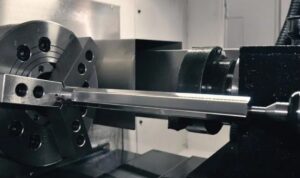

Advanced Features and Capabilities
Modern CNC milling machines offer several advanced features, such as:
- High-Speed Spindles: Allowing faster material removal rates.
- Automated Tool Changers: Enhancing productivity by reducing manual intervention.
- Touch Probes: Ensuring precise measurement and alignment of the workpiece.
Material Considerations
CNC milling can be performed on a wide range of materials, including:
- Metals: Such as aluminum, steel, and titanium, offering strength and durability.
- Plastics: Like ABS, polycarbonate, and nylon, used for lightweight and corrosion-resistant components.
- Composites: Providing high strength-to-weight ratios for specialized applications.
Precision and Quality Control
The precision of CNC milling is unmatched, making it ideal for industries requiring exact specifications. Quality control measures, such as in-process inspections and final quality checks, ensure that every part meets the required standards.
Benefits of CNC Milling Services
Speed and Efficiency
CNC milling offers rapid production times, significantly faster than traditional methods, thanks to automation and precise control.
Flexibility and Customization
The ability to easily modify CNC programs allows for quick adjustments and customization, catering to specific project needs.
Cost-Effectiveness
While the initial setup cost may be high, the overall efficiency and reduced labor costs make CNC milling a cost-effective solution in the long run.
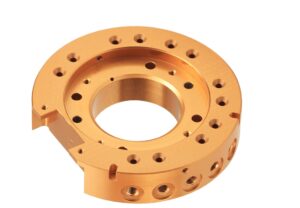

Exploring Types of Precision Machining Machinery
CNC Milling Machines
CNC milling machines use a rotary cutter to remove material from a workpiece. The machines are controlled by CAD/CAM software, enabling them to perform different operations such as pocket milling, profile milling, and surface contouring. They are ideal for die sinking and creating intricate features in metal and plastic parts. Different configurations include knee mills, bed mills, turret mills, C-frame, and gantry mills.
Advantages:
- Can produce parts with tolerances up to 0.0004”.
- Compatible with various materials, including metals, plastics, and composites.
- Ideal for surface contouring and making pockets.
Disadvantages:
- More material wastage compared to additive processes like 3D printing.
Applications:
- Automotive parts, aerospace components, intricate parts in dies.
CNC Turning Centers (Lathes)
In CNC lathes or turning centers, the workpiece rotates against a fixed cutting tool, creating a precise symmetrical shape, like a shaft. Some lathes also incorporate live tooling capabilities that allow them to execute additional processes other than just turning. For instance, a Y-axis lathe lets you offset the center to create complex geometries. It also allows for tapping, milling, drilling, and turning.
Advantages:
- High precision in creating symmetrical parts.
- Live tooling allows for multi-process machining.
- Efficient for large-scale production runs.
Disadvantages:
- Less versatile for non-cylindrical components.
Applications:
- Symmetrical components: shafts, rods, and cylindrical parts.
Swiss-Type Lathes
A Swiss-type lathe is different from a traditional lathe; here the headstock can move linearly instead of being stationary. The guided bush behind the headstock allows for precise movement of the workpiece. These machines are ideal for extremely small and intricate parts.
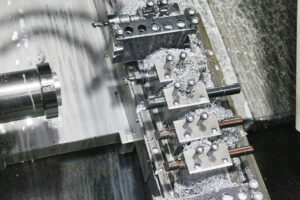

Advantages:
- Tools and workpieces are close, minimizing the risk of tool deflection.
- Can produce parts with tolerances up to 0.0001”.
- Can run higher RPMs compared to traditional lathes.
Disadvantages:
- Higher tool costs.
- Limited bar stock size.
Applications:
- Implants, surgical tools, and microelectronic components.
Multi-Axis Machining Centers
Generally, machining allows movement in three axes: X, Y, and Z. Multi-axis machines allow working 4 or more axes; up to 12 axes machines are available. Multi-axis machines are capable of performing multiple operations on a single bed. For instance, one single machine can perform water jet cutting, engraving, and milling.
Advantages:
- Enables the machining of intricate and complex parts without repositioning the workpiece.
- Reduces total production time and improves workflow efficiency.
- Increases the potential for innovation in part design due to fewer geometric constraints.
Disadvantages:
- Higher initial investment.
Applications:
- Prototyping, aerospace, automotive parts, and complex medical devices.
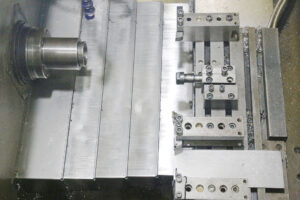

Mill Turning CNC Centers
One kind of multi-axis machine that combines the capabilities of CNC milling and turning into a single machine. It permits both the rotating of the workpiece and the movement of the cutting tool. Live tooling capability is also available.
Advantages:
- Lower space requirement than separate milling and turning machines.
- Improves product consistency by minimizing the handling between operations.


Disadvantages:
- Complex configuration and setup.
Applications:
- Cylindrical parts that require both keys and slots.
CNC Grinding Machines
Precision grinders use abrasive wheels to achieve high-accuracy surface finishes and tight dimensional tolerances on parts. They are commonly used to finish machined parts after they have been milled or turned to achieve a smoother surface or a specific dimensional tolerance. Surface grinders, cylindrical grinders, and centerless grinders are among the few popular types.
Advantages:
- Automated machines; can run continuously for weeks.
- Offer great repeatability.
- Compatible with a range of materials.
Disadvantages:
- A time-consuming process.
Applications:
- Finishing automotive parts like gears, shafts.
CNC Drill Presses
CNC drill presses feature a stationary workpiece that lies on a small fixed bed while a drill bit (from the top) rotates to create precise holes. Their major use is drilling holes for fasteners or assembly operations. These drill presses have various types including upright, bench, and radial drill presses, with adaptations for CNC operations.
Advantages:
- High precision and repeatability in hole placement and size.
- Automated operations reduce manual errors and increase productivity.
Disadvantages:
- Just provide drilling operations.
Applications:
- Holes in metalwork for fasteners; wood industry.
Electrical Discharge Machines (EDM)
EDM machines use electric discharge/sparks to shape by material removal. They aid in precision machining metals (even hard ones) and produce intricate designs that are difficult to achieve with traditional machining. Two forms of EDM machines include wire EDM and die sinker EDM.
Advantages:
- Ideal for hard or fragile materials that cannot withstand mechanical stresses.
- Provide a micron-level precision.
- Highly capable of cutting materials with sharp corners and intricate interior details.
Disadvantages:
- Slower compared to other machining methods.
- Works only on conductive metals.
Applications:
- Dies, fixtures, and precision parts manufacturing, holes smaller than 0.1mm.
Laser Cutting and Engraving Machines
Laser cutting machines use a high-power laser beam as a cutting tool to cut, engrave, or mark materials. These machines can cut and engrave both metals and non-metals. Its configuration varies from flatbed lasers for sheet materials to 3D lasers for cutting and engraving complex shapes. Desktop versions for laser machines are also available.
Advantages:
- High precision and clean cuts.
- Non-contact process reduces material deformation.
- Can cut a variety of materials including metals, plastics, and composites.
Disadvantages:
- Limited to certain material thicknesses and types.
Applications:
- Fabrication of industrial parts, decorative and crafts work.
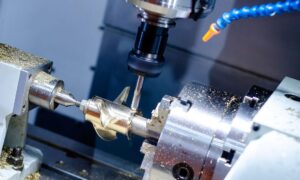

Waterjet Cutters
Waterjet cutting is a non-thermal cutting method that employs a high-pressure (up to 60,000 psi) stream of water, mixed with abrasive particles, to cut through materials. Since the process works without introducing heat, it prevents material distortion and changes in intrinsic properties.
Advantages:
- Versatile enough to cut most materials.
- Leaves a smooth surface, often eliminating the need for secondary finishing.
- Environmentally friendly, producing no hazardous waste.
Disadvantages:
- Higher operating costs due to the use of abrasives and high water consumption.
Applications:
- All types of material cutting (metal, plastics, stone, etc.).
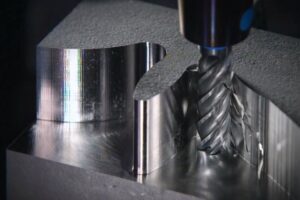

Conclusion
CNC milling is a cornerstone of modern manufacturing, offering unparalleled precision, efficiency, and flexibility. At GCH Process, we leverage advanced CNC milling technology to provide high-quality parts and prototypes, ensuring that our clients receive the best possible service. Whether for low-volume manufacturing or rapid prototyping, our CNC milling services are designed to meet the diverse needs of today’s industries.
By understanding and utilizing the capabilities of CNC milling, manufacturers can achieve greater accuracy, reduce production times, and maintain high standards of quality. As technology continues to evolve, CNC milling will remain a vital component in the advancement of manufacturing processes.

